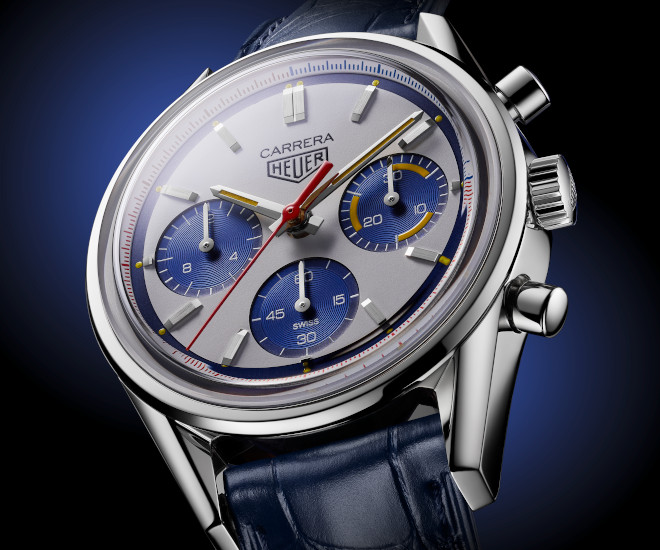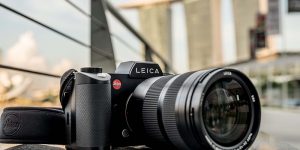Jane Cui, President of Leica Cameras Asia on the Culture of Photography
The landscape of photography has been rapidly changing; especially with the way people produce and consume it. From mobile phones to images that live for only 24-hour on social media, and iClouds as a way of storing images, one of the major changes is the reduction in the production of photography for personal documentation and appreciation.

The Leica M is a core staple at Leica Singapore and the market it serves, straddling the spectrum of amateur and professional photographers
The culture of photography has been rapidly changing; the advent of social media has led to one of the major changes in photography for personal documentation (instead of printing, they mostly go onto instagram and facebook now) and appreciation (instead of albums, we are browsing online). Hours before the Leica Singapore Galerie officially opened at the neoclassical Fullerton Hotel, itself descended from historical Singapore’s General Post Office in 2001, Jane Cui, President of Leica Cameras Asia talks to LUXUO about Leica Singapore and the Culture of Photography.
Jane Cui, President of Leica Cameras Asia on Leica Strategy and the Culture of Photography

Jane Cui, President of Leica Cameras Asia talking about the culture of photography before the opening of the new Leica Singapore Gallerie at the Fullerton Hotel
Founded on a tradition of engineering excellence in the construction of lenses and optical devices, Leica has never lost sight of the importance of preserving the culture of photography.
Jonathan Ho for Luxuo: As part of your global sales and retail strategy, is Leica technology (lenses, software) going to be found in as many smartphones as possible or do you only stick with a few partners (e.g. Huawei)?
Jane Cui, President of Leica Cameras Asia: For now it’s only going to be with Huawei. From Leica’s perspective, we have a lot of intellectual property in terms of optical technology, we are continually evaluating how we extend new lens, optical technology and camera modules into other products and brands.

Opening the Leica Singapore Galerie Fullerton is ‘Memories of Istanbul’, a collection from Magnum photographer and Leica Hall of Fame award recipient, Ara Guler.
I often encounter Leica partnerships with watchmakers like Vacheron Constantin, is this an example of your “effective partner network” and what are some of the criteria for being a partner with Leica?
In general, there’s a lot of cross-branding already happening in the business world, historically Leica always had some element of this. We’ve had an Hermes edition and a Paul Smith X2. Whether it’s a watch or fashion brand, we’re looking for a reputation for good craftsmanship and heritage. Are they a leading authority in their area of expertise? These are some of the key criteria we look for.
Let’s touch on heritage for a moment, there is an increasing amount of investigative journalism that has uncovered instances where some brands have “betrayed” their heritage by seeking greater profit margins via outsourcing, does this mean Leica have to do deeper research on potential partners?
From a Leica perspective of heritage, we still build all our products in Germany and we’re continually expanding our production facilities. Brands we choose to work with are usually still dominantly produced in the countries of their heritage, Hermes is still made in a French workshop in-house and it’s a skill passed down. Technology has been added to the manufacturing process for efficiency but the core of tradition is still there. Leica already has a few key partners, we currently don’t plan to work with LVMH but we still use the same criteria to measure any partnership we choose to go into.

A skeleton view of the Leica M3
An increasing number of interesting photography blog posts involve how a DSLR died and the photographer had to depend on a smartphone, is this a symbol that dedicated cameras are likely to disappear much like how iPods have almost been replaced by the iPhone?
In the music world, vinyl is making a comeback. I come from an IT background and have witnessed an acceleration of technology and the digitisation of our lives. We are at the point where people realise there’s so much that can be done electronically and there are things which just can’t be replaced. People are looking for that “true” element which the mp3 cannot replace in vinyl media. The same likewise for photography. As a smartphone user, I had once believed that a smartphone might realistically replace a camera someday but the key issue here is one of physics. A smartphone has a limited amount of space and it would never be able to have the same image sensor as a dedicated camera might have. Even from the lenses, physics dictates that you need a certain size to capture lighting, a smartphone will never be able to have a big lens. A lot of what a smartphone is able to do today does not come from true optical engineering but post-processing software. What you take is not what you see in an iPhone. In a Leica camera, there’s very little post-processing, what you capture is what you see. I don’t believe the camera will go away, the market may become more selective and the cameras which are not too distinct from the smartphones like your entry level point and shoots, those are the ones which will disappear.
Even with the majority of images being used for social media, do we need such powerful optics? Not many people are printing photos anymore?
That’s not true, there’s a growing number of photography enthusiasts returning to print formats. Demand for film is coming back too. Furthermore, in the interior design community, more and more people want wallpaper prints of their personal images – that industry is booming, a smartphone shot can never be used for that sort of project.

The unibody Leica TL is considered to be trendy and fashionable, aimed at catering to the design oriented market.
With S, SL, M, Q, TL, X, D-Lux, V-lux and C lines, is Leica spreading itself thin? Surely there are some cross-segments in consumer needs/demands and it seems contrary to traditional business strategy to run specific product lines to address specific needs?
We continually evaluate our product lines and the various segments we are targeting. The M series is our heart and soul product for both amateurs and professionals whether it’s the optics or the mechanics. The Q product range is often used as a companion device for people who already have the M, there’s a lot of flexibility in capturing the moment without prior configuration. The point and shoot categories are the ones we monitor constantly to determine if they’re fitting the needs of target groups. The smooth, unibody TL was designed for the fashionable and trendy.
Many digital cameras shoot video now, it’s a feature curiously missing on the Leica M, was it a strategic choice or simply oversight?
With the ubiquity of smartphones, I feel that there is no lack of availability for devices which can capture video. That said, there are very few companies which deliberately remove a feature. Product managers tend to be relatively lazy, it’s easy to layer features upon features in a product, it’s very difficult to remove features and claim that’s new. Only one other company is brave enough to do this, and it’s Apple. The iPod was not the first mp3 player but it was the first to insist that it had to be operated from a central wheel, a product company which is willing to remove features and launch it is extremely brave. You have to be able to have that courage to understand what is your product and stay true to it, to me Leica is one of those rare product companies. The video feature is not something used by our true M users, they’re looking for that vintage raw feeling.

Arguably Turkey’s most eminent photographer, Ara Guler impressively portrayed life in Istanbul, city of his home and birthplace for over 60 years; now on display at Leica Singapore Galerie at The Fullerton Hotel
What product lines will eventually form the core of Leica’s business?
We have to stay true to our fans and heritage. The M product line is the heart and soul. We are focused on growing the professional lines, as this segment is already dominated by other brands thus the challenge is breaking into it. Finally, there is going to be outreach to new users and younger generation. Surprisingly, this region has a greater number of youths interested in a Leica.
Whether as a point of differentiation or a genuine interest, I’ve noticed more photographers are using film again, does this mean that Leica will be expanding its film based cameras?
We continue to have our film cameras. Analogue products exist not so much because they’re trendy but because like vinyl, photographers are looking for the warmth of film. There are certain things that a digital camera cannot replace, there’s an authenticity of film. It’s also a lifestyle, life is pretty faced already, using an analogue camera slows it down, you actually to return to the process of thinking – creation, framing and then the last action is that button press. The creation process is vastly different from a digital camera where you greater flexibility with your shots and then just delete what you don’t want.

Exhibited at Leica Singapore Galerie, Ara Guler is well known for his work covering political affairs, politicians and artists like Dali, Chagall, Hitchcock, Churchill, Picasso and Gandhi.
Does this imply that the analogue line will see very few improvements because you want to keep that “feel”?
Technology improvements are not in conflict, we will always apply what we believe is the best to the analogue line. That said, it’s true that there are fewer avenues for improvement as opposed to an electronic camera. There’s always new ways of improving on a product depending on the research.
Automated robot vacuum cleaners used to cost north of $500 and now they cost slightly more than a $100 due to Chinese clones, now that you’ve entered China with your own subsidiary, is there a concern on leaks of intellectual property?
I have to be politically correct and coming from Microsoft, I have to say that every company with intellectual property (IP) struggles in China. The Chinese government has begun to enforce stronger IP protection and that’s because Chinese companies have started creating IP for themselves and they need laws to protect their own intellectual property for it to be exportable globally. China eventually be on par with the rest of the world in terms of intellectual property protection when they see GDP improvement from IP rather than just manufacturing. I don’t know when that’s going to be but until then, there’s always going to be an element of risk for us. Unlike misuse of our branding and logo, our camera technology is quite protected because we are made in Germany and the barrier to entry is quite high. You must have the know-how and you can’t just go into a factory to curve out special glass lenses, assemble it and call it a Leica. From an optical engineering perspective, that is not something that can be copied in China.

Leica Singapore Galeria at The Fullerton Hotel
Leica Singapore unveiled the all-new Leica Galerie at the heritage location of Fullerton Hotel, reinforcing the importance in tradition, passion and culture of photography. The Leica Singapore gallery joins Leica’s international presence of Leica Galeries from Milan, Los Angeles, Prague, to Kyoto, Sao Paulo, Istanbul and more.
The new Leica Singapore Galerie Fullerton is a 850 square feet tribute to the culture and journey of photography. It is a showcase of Leica pictorial culture with a curated selection of historical and collectable Leica cameras from the Silver Jubilee Edition and the M3 Betriebsk Chrome.
Leica Singapore Galerie Fullerton opens with “Memories of Istanbul”, a collection from Magnum photographer and Leica Hall of Fame recipient, Ara Guler.









